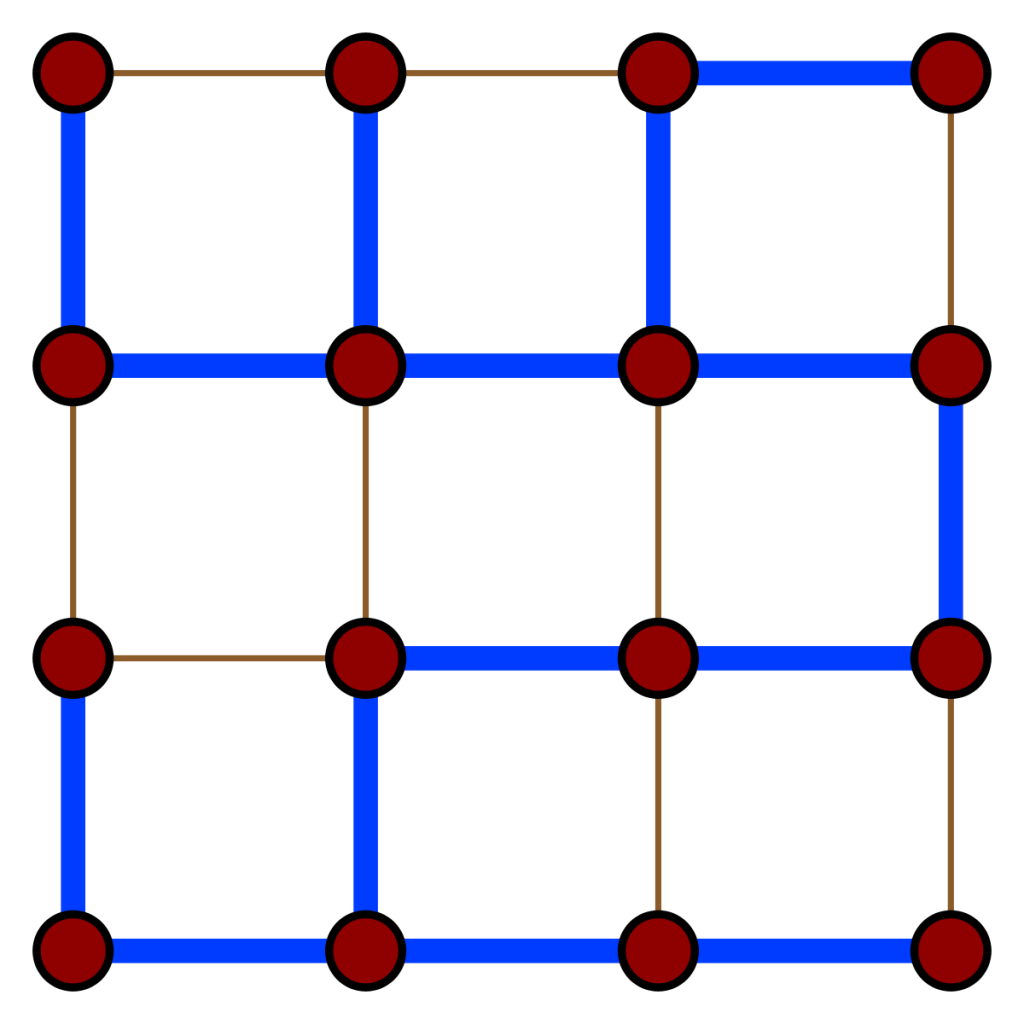8 min to read
Top 15 Data Structures Interview Questions & Answers
In this post, we will be presenting the top 15 data structures interview questions to help you all prepare smartly for your dream job opportunity. Preparing for interviews is an essential step. It is always best to go through the concepts and questions that are generally posed during the interview sessions. It helps you brush up your knowledge and you can be portrayed as someone who has a vast knowledge and keen interest in that subject. This will eventually make a great impression on the inte
In this post, we will be presenting the top 15 data structures interview questions to help you all prepare smartly for your dream job opportunity.
Preparing for interviews is an essential step. It is always best to go through the concepts and questions that are generally posed during the interview sessions.
It helps you brush up your knowledge and you can be portrayed as someone who has a vast knowledge and keen interest in that subject. This will eventually make a great impression on the interviewer and help you land a great job.
Basic Questions to Prepare For-
Before learning about data structures interview questions, let’s start with the basic questions you’ll be asked as soon as you reach the place of the interview. You might already be prepared for these questions, but it is always a good idea to go through them.

Tell us something about yourself– Here, you’ve got to keep it brief and tell them about your schooling, skills, interests, and technologies you have been working on. You can tell them about your achievements, certifications, and training.
What do you know about the company– Make sure that you read about the company you are interviewing for, visit the website, and see what industry they are in before going out for the interview. Check out their stories, awards, clients, and history. This will leave a massive impression on the interviewer once you are able to answer that.
What are your professional strengths and weaknesses- This is a basic problem that is posed in virtually every interview. So, you can work out your strengths and weaknesses better and respond to the interviewer to them.
We have gathered many important data structures and interview questions that can be asked. The idea for curating this article is to keep you in the loop so that you do not miss out on any of these important questions.
Apart from the basic “What is Data Structure?“-there is a whole lot of variety of questions that can be posed.
Data Structure-The data structure is a method to define how the data is structured and managed. Different types of data structures are suitable for specific types of applications, and some are specialized for particular tasks. Examples include- Arrays, Linked Lists, Stack, Queue, etc.
Data structures are the core element of many computer science algorithms, as they allow programmers to manage the data effectively.
So, let’s go ahead and learn what the top 15 data structures interview questions hold:
Top 15 Data Structures Interview Questions
Question 1. Explain the Types of Data Structures.
Answer– There are mainly two types:
- Linear Data Structure: When all of its components are organized in a proper sequence, a data structure is called linear. The components are stored in linear data structures in a non-hierarchical manner where each item has successors and predecessors except for the first and final elements.
- Non-linear data structure: The Non-linear data structure does not form a series, i.e. each object or entity is linked to two or more two objects in a non-linear manner. The elements of the data are not organized within the sequential model.
Question 2: Discuss the Different Operations that can be Carried out on Data Structures.
Answer– Following are the different operations that are generally carried out in Data Structures:
- Insert– Add a new data item to the already existing set of data items.
- Delete– Remove an existing data item from the given data item set.
- Traverse– Access each piece of data precisely once so that it can be processed.
- Search– Figure out where the data item resides in the specified data item set.
- Sort– Arrange the data objects in certain order i.e. in ascending or descending order for numerical data and in dictionary order for alphanumeric data.
Question 3: What do you Understand by Stack? Please Explain some of its Applications.
Answer– Stack is a linear data structure to access components that implement either LIFO (Last In First Out) or FILO (First In Last Out) method. The common functions of a stack are push, pop, and peek.

Few noteworthy places where Stack is applied:
- Evaluate the balanced parentheses in an expression
- Analysis of a postfix experiment
- Placing two stacks into an array
- Conversion of infix to postfix
- Reversing of the string.
Question 4. Explain the Concept of a Queue. How can you differentiate it from a Stack?
Answer– A queue is a type of linear structure that is used to access components that support the FIFO (First In First Out) method. Dequeue, enqueue, front, and rear are key queue functions. Unlike a stack, the arrays and linked lists are used to enforce a queue.
The element most recently added is removed first in a stack. However, in the event of a queue, the element least recently added is removed first.
Question 5. Differentiate Between PUSH & POP
Answer– The functions PUSH and POP determine how to store and retrieve data in a stack.
PUSH: PUSH determines the “insertion” of data into the stack.
POP: POP specifies retrieval of the data. This means data is removed from the stack.
Question 6: What do you Understand by Data Abstraction?
Answer– Data abstraction helps to divide complicated data tasks into small, easily manageable components. It begins with defining all the data objects associated and the different operations to be conducted on the same without putting too much stress on the way the data is stored.

Question 7. Can you Explain a few Approaches to Writing an Algorithm?
Answer– There are 3 widely used approaches to develop the algorithms-
Greedy approach − Seeking a solution by picking the next best possible alternative.
Divide and conquer − Bringing the problem to a minimal feasible sub-problem and separately solving it.
Dynamic programming − Bringing the problem to a minimal possible sub-problems and solving them together.
Question 8: Explain the Steps Involved in the Insertion and Deletion of an Element in the Stack
Answer–
Algorithms of Stack operations :
Algorithms of PUSH operations-
Step 1: Start
Step 2: Check if the stack is full if(top==(SIZE-1))
Step 3: If the stack is full, Give a message and exit printf("\nStack Overflow");
Step 4: If the stack is not full, increment top to point next empty space.
top=top+1;
Step 5: Add the data element to the stack location, where the top is pointing.
printf("\nEnter the item to be pushed in stack:"); stack[top]=item;
Step 6: Stop
Algorithms of POP operations :
Step 1: Start
Step 2: Check if the stack is empty if(top==-1)
Step 3: If the stack is empty, Give a message and exit printf(“\nStack Underflow”);
Step 4: If the stack is not empty, Print the element at which the top is pointing.
printf("\nPopped element is : %d\n",stack[top]);
Step 5: Decrement top to point to the previous location.
top=top-1;
Step 6: Stop
Question 9: Explain Linear Searching
Answer– Linear search aims to locate an object in a sequentially arranged data type. These sequentially arranged data items known as arrays are accessible in an incrementing memory location.
Linear search compares the desired item of data to each of the items in the list or array. The average case time complexity of the linear search is Ο(n) and the worst case complexity is Ο(n2). Data in target arrays/ lists need not be sorted.

Question 10. What is Binary Search?
Answer– A binary search only operates on sorted lists or arrays. This search chooses the middle which divides the whole list into two sections. The middle one is compared first. It works by halving the array on each iteration until the necessary element is found.
Question 11. What do you Understand by Array and Multidimensional Array?
Answer–
Arrays are characterized as the gathering of similar types of data items stored at contiguous memory locations. It is the simplest data structure that allows random access to any data item by using its index number.
The multidimensional array can be known as the array of arrays which takes the form of rows and columns wherein the data is kept in tabular form.
2D arrays are generated to enforce the lookalike data structure of a relational database. It gives the convenience of carrying a large amount of data at once that can be transferred to any number of functions where necessary.
Question 12. Can you Explain the Difference Between a Linked List and an Array?
Answer–
| Linked List | Array |
| Linked List is an ordered collection of elements of the same type in which each element is connected to the next using pointers. | An array is a collection of elements of a similar data type. |
| The size of a linked list is not fixed. | The Size of an array is fixed. |
| Memory is allocated from stack. | Memory is allocated from heap. |
| Random accessing is not possible in linked lists. The elements will have to be accessed sequentially. | Array elements can be accessed randomly using the array index. |
| Insertion and Deletion operations are costlier since the memory locations are consecutive and fixed. | Insertion and Deletion operations are fast and easy in a linked list. |
| New elements can be stored anywhere and a reference is created for the new element using pointers. | Data elements are stored in contiguous locations in memory. |
Question 13. Explain the Process of Hashing
Answer– The technique of transforming a set of key values into a collection of array indexes is hashing. Associative data storage can be generated by hash tables where data indices are identified by supplying the key values that correlate.

Question 14. What do you Understand by a Spanning tree? What is the Maximum Number of Spanning Trees a Graph can Have?
Answer– A spanning tree is a subset of a graph that has all the vertices but with the minimum number of edges necessary.
The maximum number of spanning tree a graph have depends on the way the graph is linked. A complete undirected graph containing n number of nodes may have a maximum of nn-1 number of spanning trees.
Question 15. Give names of All the Trees
Answer– There are six types of trees given as follows.
- General Tree
- Forests
- Binary Search Tree
- Tournament Tree
- Binary Tree
- Expression Tree
To Conclude
Besides these data structures interview questions, you could use the different YouTube tutorials or content available online to brush up on your skills in the required programming languages.
But make sure to prepare thoroughly and review all the things you already know before stepping into the interview and skipping the topics you have no information about.
You have to really stay focused and be self-confident. The aim is to learn and not merely to impress the interviewer. If you learn right, it will teach you how to present it so you can answer every question with full knowledge.
Finally, dress up according to the role you have been applying for. Wear proper formal, look good, and sound good. Be there before schedule, and try to not be nervous.
And, don’t forget to share your interview experience with us in the comments section below!
FAQ
Q1. What are the main types of Data Structures?
Ans- Here are two fundamental kinds of data structures: an array of contiguous memory locations and linked structures. You can even combine the two mechanisms.
Q2. Where is Data Structure used?
Ans- In general, data structures are used to implement the physical forms of abstract data types. Data structures are a crucial part of designing efficient software. They also play a critical role in algorithm design and how those algorithms are used within computer programs.
🚀 Try Codersera Free for 7 Days
Connect with top remote developers instantly. No commitment, no risk.
Tags
Trending Blogs
Discover our most popular articles and guides
10 Best Emulators Without VT and Graphics Card: A Complete Guide for Low-End PCs
Running Android emulators on low-end PCs—especially those without Virtualization Technology (VT) or a dedicated graphics card—can be a challenge. Many popular emulators rely on hardware acceleration and virtualization to deliver smooth performance.
Android Emulator Online Browser Free
The demand for Android emulation has soared as users and developers seek flexible ways to run Android apps and games without a physical device. Online Android emulators, accessible directly through a web browser.
Free iPhone Emulators Online: A Comprehensive Guide
Discover the best free iPhone emulators that work online without downloads. Test iOS apps and games directly in your browser.
10 Best Android Emulators for PC Without Virtualization Technology (VT)
Top Android emulators optimized for gaming performance. Run mobile games smoothly on PC with these powerful emulators.
Gemma 3 vs Qwen 3: In-Depth Comparison of Two Leading Open-Source LLMs
The rapid evolution of large language models (LLMs) has brought forth a new generation of open-source AI models that are more powerful, efficient, and versatile than ever.
ApkOnline: The Android Online Emulator
ApkOnline is a cloud-based Android emulator that allows users to run Android apps and APK files directly from their web browsers, eliminating the need for physical devices or complex software installations.
Best Free Online Android Emulators
Choosing the right Android emulator can transform your experience—whether you're a gamer, developer, or just want to run your favorite mobile apps on a bigger screen.
Gemma 3 vs Qwen 3: In-Depth Comparison of Two Leading Open-Source LLMs
The rapid evolution of large language models (LLMs) has brought forth a new generation of open-source AI models that are more powerful, efficient, and versatile than ever.